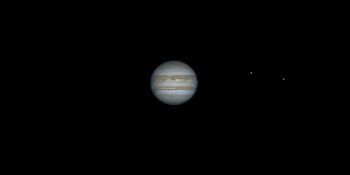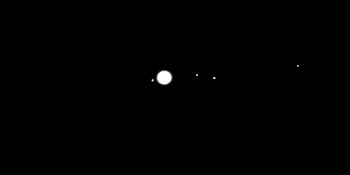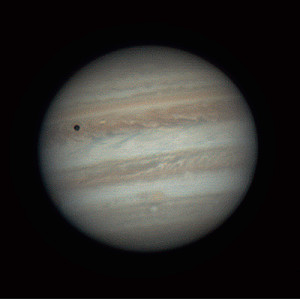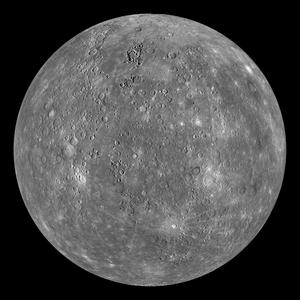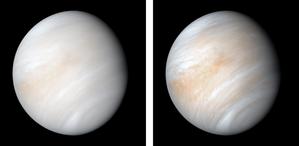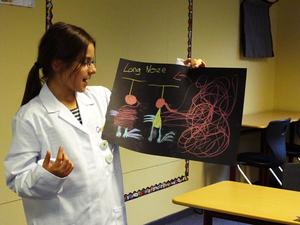Glossarbegriffe: Planet
Description: Ein Planet wird von der Internationalen Astronomischen Union so definiert: Er ist ein Himmelskörper, der einen Stern oder den Überrest eines Sterns umkreist und groß genug ist, um durch seine eigene Schwerkraft eine annähernd runde Form zu erhalten, aber nicht so massereich ist, dass in seinem Kern jemals Kernfusion stattfinden kann. Er muss auch groß genug sein, um seine Umlaufbahn "aufräumen" zu können, d.h. andere Objekte, die sich in der Nähe seiner Umlaufbahn um den Stern befinden, zu entfernen.
Daher sind Planeten im Vergleich zu Sternen kalte Objekte, die im sichtbaren Bereich nur durch das von ihren Sternen reflektierte Licht leuchten, aber Licht im Infrarotbereich aussenden. In unserem Sonnensystem kreisen acht Planeten um die Sonne. Planeten können im Wesentlichen aus Gestein bestehen, wie die inneren Planeten - Merkur, Venus, Erde und Mars - oder hauptsächlich aus Flüssigkeit und Gas mit einem kleinen festen Kern wie die äußeren Planeten - Jupiter, Saturn, Uranus und Neptun. Planeten außerhalb des Sonnensystems werden als extrasolare Planeten oder kurz Exoplaneten bezeichnet.
Zugehörige Glossarbegriffe:
- Erde
- Exoplanet
- Gasriese
- Riesenplanet
- Eisriese
- Internationale Astronomische Union
- Jupiter
- Mars
- Merkur
- Neptun
- Kernfusion
- Äußere Planeten
- Saturn
- Sonnensystem
- Gesteinsplanet
- Uranus
- Venus (Planet)
See this term in other languages
Term and definition status: The original definition of this term in English have been approved by a research astronomer and a teacher The translation of this term and its definition is still awaiting approval
The OAE Multilingual Glossary is a project of the IAU Office of Astronomy for Education (OAE) in collaboration with the IAU Office of Astronomy Outreach (OAO). The terms and definitions were chosen, written and reviewed by a collective effort from the OAE, the OAE Centers and Nodes, the OAE National Astronomy Education Coordinators (NAECs) and other volunteers. You can find a full list of credits here. All glossary terms and their definitions are released under a Creative Commons CC BY-4.0 license and should be credited to "IAU OAE".
If you notice a factual or translation error in this glossary term or definition then please get in touch.
Zugehörige Medien
Jupiter's Rotation, by Vishal Sharma, India
Bildnachweis: Vishal Sharma/IAU OAE
License: CC-BY-4.0 Creative Commons Namensnennung 4.0 International (CC BY 4.0) icons
Jupiter Moons Movie2, by Nicolas Hurez, Paul-Antoine Matrangolo, and Carl Pennypacker, United States of America
Bildnachweis: Nicolas Hurez, Paul-Antoine Matrangolo and Carl Pennypacker/IAU OAE
License: CC-BY-4.0 Creative Commons Namensnennung 4.0 International (CC BY 4.0) icons
Jupiter, Io and its shadow, by Ralf Burkart, Germany
Bildnachweis: Ralf Burkart/IAU OAE
License: CC-BY-4.0 Creative Commons Namensnennung 4.0 International (CC BY 4.0) icons
Mercury
Bildnachweis: NASA/Johns Hopkins University Applied Physics Laboratory/Carnegie Institution of Washington credit link
License: PD Public Domain icons
Venus in visible light
Bildnachweis: NASA/JPL-Caltech credit link
License: PD Public Domain icons
Related Activities
Design Your Alien
astroEDU educational activity (links to astroEDU website) Description: Design an alien life form suited for an extra-terrestrial world.
License: CC-BY-4.0 Creative Commons Namensnennung 4.0 International (CC BY 4.0) icons
Tags:
Life
, Environment
, Extra-terrestrial
, Art
, Creativity
, Hands-on
, Alien
Age Ranges:
8-10
, 10-12
Education Level:
Primary
, Secondary
